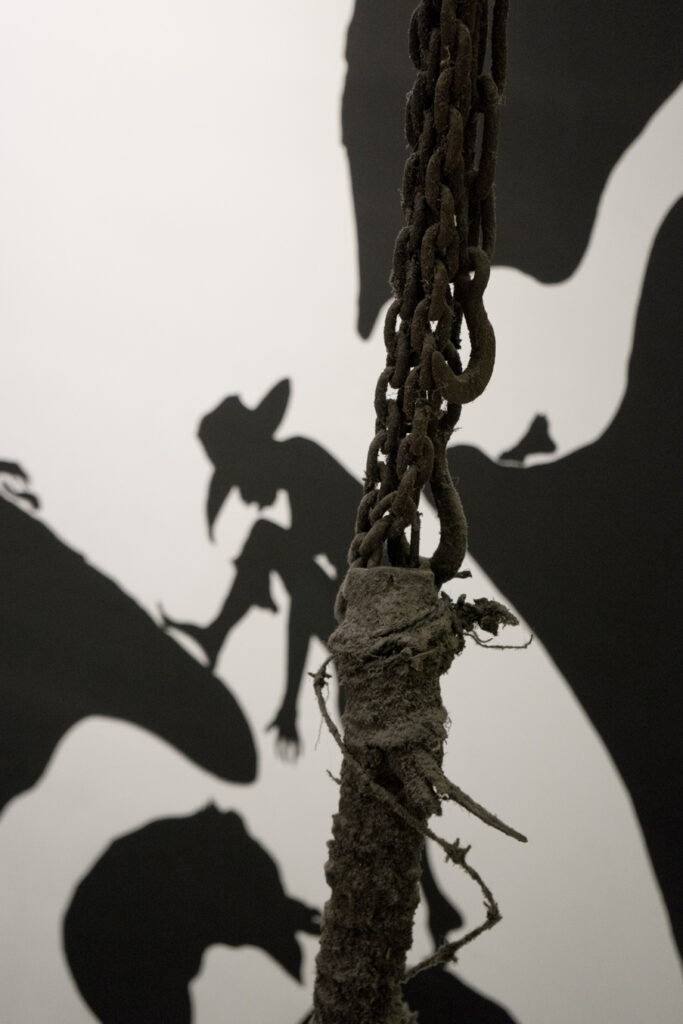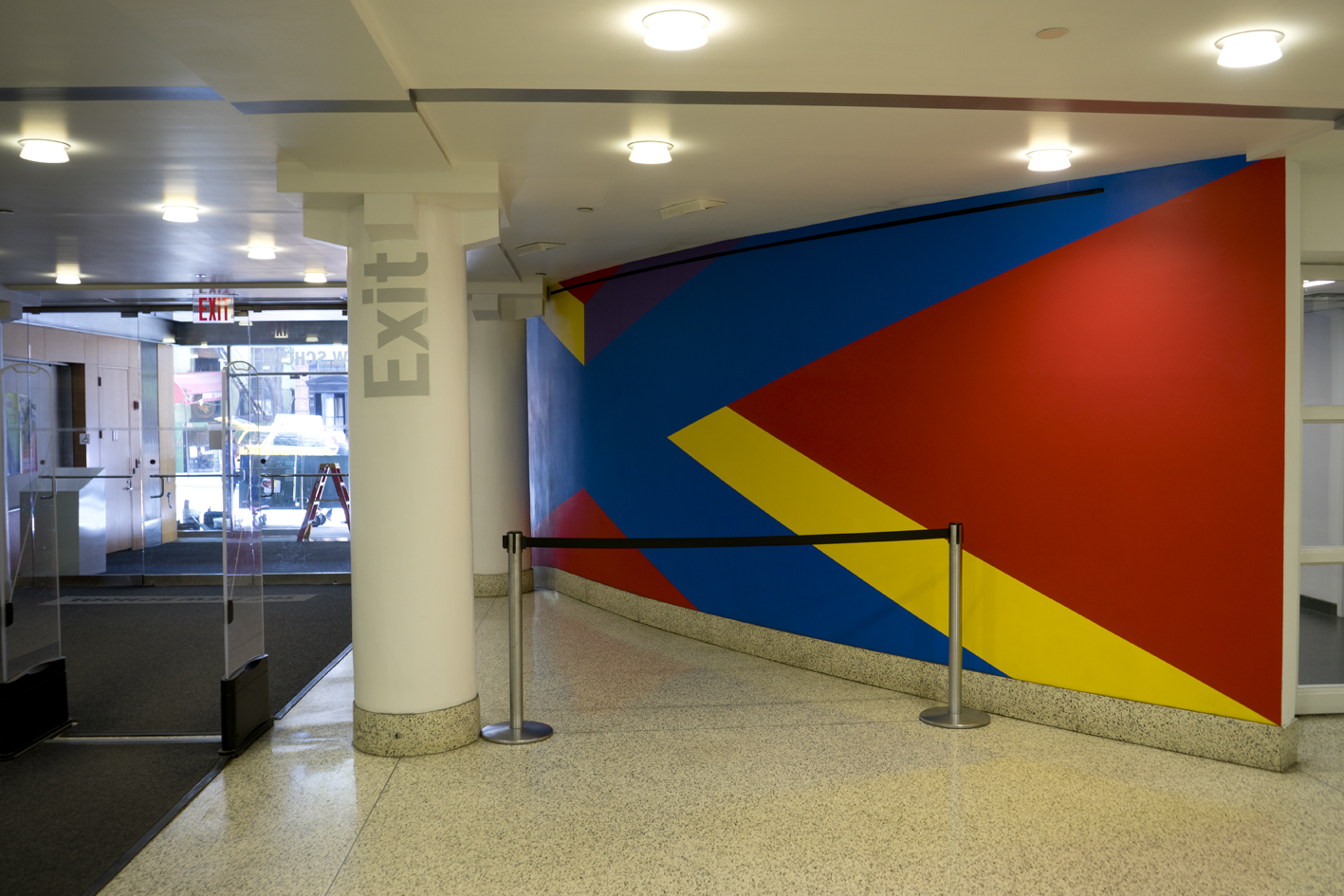

For nearly ten years I’ve walked past Arnhold Hall at 55 West 13th Street paying scant attention to the lobby and mezzanine murals of Sol LeWitt (Drawing #107A and #107B, Bars of Color, February/March 2003) and Kara Walker (Event Horizon,” 2005). But why? Those spaces are functional to the core with security portals, large black desk, stairwell and bank of elevators all pressing us forward. No surprise then to learn that the building (constructed in l891) originally housed manufacturing firms and a Bon Marché department store. It was acquired by The New School in the 1990s with renovation completed in 2003.
To view art, we must first slow down—the most basic requirement for intense viewing, deep thought and reflection—and only then, do we begin to notice that the art and architecture speak to each other. LeWitt’s bands of color reinforce the left leaning curve of the semi-circular wall while his colored wall also provides a transition from sunlight to artificial indoor light. The hard angles of the terrazzo stairs, the mesh and steel echo in three dimensions the geometry of the mural.
Kara Walker’s scenario is startling with its human forms ominously spilling off a painted cliff, the entire scene set in motion by a white male character, one of Walker’s familiar personae. Perhaps the barbed wire hanging sculpture by Petah Coyne (Untitled #587, 1988), installed later, is meant to materialize or objectify the pain in Walker’s two-dimensional drama. But it’s hard to be moved by Coyne’s work because the only place to really observe it is on the stairs. This unfortunate situation reflects the real challenge of placing work in spaces not designed for them.
Some background: Sol Lewitt’s mural was a gift of the artist. Kara Walker’s work was commissioned by the University for this location and Petah Coyne’s construction was a gift of Vera List. The work by Coyne was languishing in storage, and with all good intentions, restored and displayed (she helped install it) but the installation still looks like the afterthought that it was.
Wall text can sometimes aid in understanding a work’s context and history. The small wall label on the side of the stairs explaining the origins of Coyne’s and Walker’s work in race and gender politics seems disconnected from the entire ensemble. A better idea might be to have an additional wall text, larger, with a meaningful phrase or a paragraph by a feminist, a political writer, a journalist, or better, the artists themselves.
Arnhold Hall will be the new home for Mannes College in fall 2014 making it an opportune moment to revisit some of the decisions of the past.
How can architects and designers who are hired as independent contractors have a more meaningful dialogue with the curators of the collection and the faculty and staff who know it well?
Nothwithstanding the functional and financial restraints that are a part of any commission, can faculty and staff have a vote on new design?
Why are 500 or so artworks in the University Collection in storage rather than on display?
Lenore Malen
Faculty, Parsons The New School for Design

